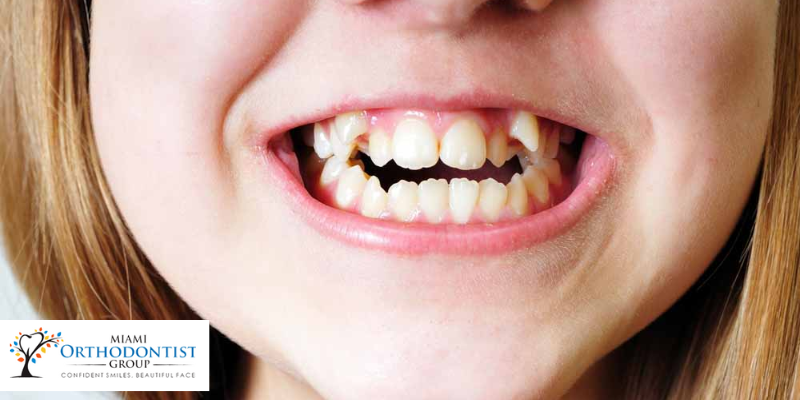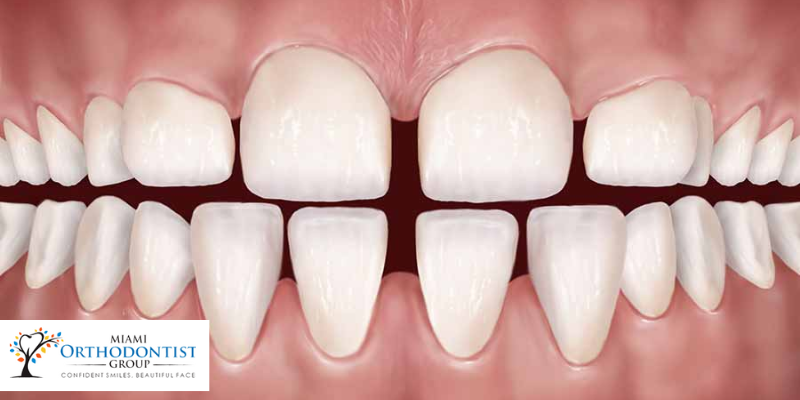There are several reasons why teeth and bites get out of alignment. It includes teeth that are too wide for your mouth or an unequal upper and lower jaw size. Many times, crooked teeth and improper bites are inherited. But they can also result from pacifier use, jaw injuries, thumb sucking, early loss of baby or adult teeth, and other factors.In addition to their unsightly appearance, crooked teeth can make it hard to keep them clean and increase the risk of developing cavities, tooth decay, and gum disease.
You may chew incorrectly due to misaligned bites, and the stress on your teeth, gums and jaw increases the chance of fracturing a tooth. The good news is that there are several solutions available to correct it. You can prevent the dental issues caused by misaligned teeth.
Distinctive Forms of Misalignment / Bite Alignment
Your teeth may be affected by several misalignments. Here are some of the most prevalent bite and teeth alignment issues we encounter:
#1 Crowding:
 Tooth crowding represents the most frequent issue linked to the requirement for orthodontic treatment. Dental crowding happened due to a variety of circumstances. The most frequent cause of crowding is the mismatch between the space in the jaw and the teeth’ size.
Tooth crowding represents the most frequent issue linked to the requirement for orthodontic treatment. Dental crowding happened due to a variety of circumstances. The most frequent cause of crowding is the mismatch between the space in the jaw and the teeth’ size.
Crowding can result in “poor bites,” impacted teeth, and an unsightly look.
#2 Spacing:
 Another common problem associated with the requirement for orthodontic treatment is the spaces between the teeth. Spacing is similar to crowding. The disparity between the amount of space available in each jaw and the teeth size is the reason for spacing.
Another common problem associated with the requirement for orthodontic treatment is the spaces between the teeth. Spacing is similar to crowding. The disparity between the amount of space available in each jaw and the teeth size is the reason for spacing.
Teeth that are missing or less than usual can also cause gaps. Teeth that are missing or are less than usual can also cause spacing.
#3 Overjet:
Overjet is the term for the upper tooth’s horizontal projection in front of the lower teeth. Overjet is commonly accompanied by a Class II malocclusion. It happens when the bottom jaw is under the upper jaw. The habit of thumb sucking or finger can also result in severe overjet.
#4 Overbite:
The upper teeth vertically overlapping the lower teeth is known as an overbite. An extreme overbite, often known as a deep bite, is when the upper front teeth enclose the lower front teeth.
It frequently results in the lower front teeth biting on the gums. The gums are present behind the higher front teeth. They can harm the surrounding bone and gum tissue.
#5 Openbite:
A lack of vertical overlap between the incisor (front) teeth is referred to as an open bite. It happens when you bite down. The upper and lower front teeth do not make contact. An open bite may result from a habit of thumb or finger sucking, abnormal development of one or both jaws, or both. Excessive tongue push results in an open bite. It happens when the tongue slides in front of the teeth when swallowing. The gap between the upper and lower front teeth puts too much pressure on the rear teeth while biting down.
#6 Underbite:
Underbite situations happen when the lower front teeth stick out. The alignment goes beyond the in front of the higher front teeth. Underbite can lead to several digestive issues.
It frequently occurs with a Class III malocclusion. You can characterize the problem as an expanding lower jaw, a tiny upper jaw, or both. An anterior crossbite is another name for an underbite.
# 7 Crossbite:
A crossbite happens when the upper teeth overlap the bottom teeth. The top teeth should position outside the bottom teeth in a healthy jaw connection. Anterior crossbite refers to the crossbite that occurs with the front teeth (posterior crossbite). A small or restricted upper jaw is frequently the cause of posterior crossbites. Crossbites can make it difficult to bite and chew.
Options for Misalignment Treatment
Your tooth or bite misalignment’s severity will determine your treatment options. When there is an issue with crowding, some individuals may merely need a removable retainer, while others may require tooth extractions.
Usually, a significant overbite or underbite may need to be corrected surgically. Braces are essential to solve the issue.
Conclusion
There is a therapy option for you, regardless of how severely your bite or teeth are out of alignment. Numerous factors will affect your treatment plan, but your orthodontist will walk you through it and personalize it for your unique case. To begin your road to a healthy smile, get in touch with us right now for a free consultation.


